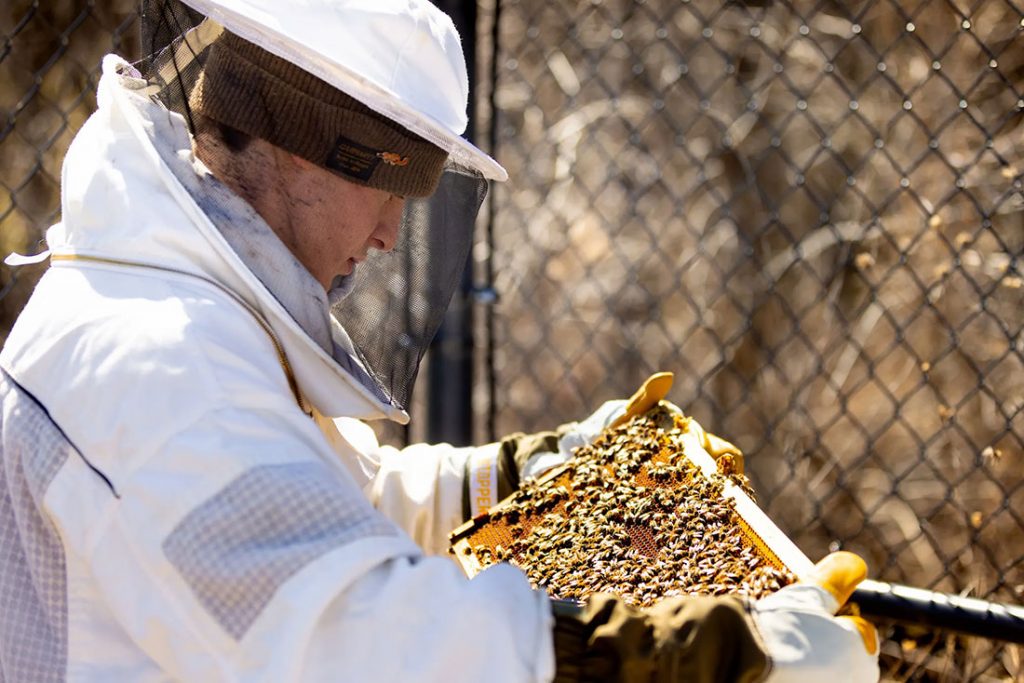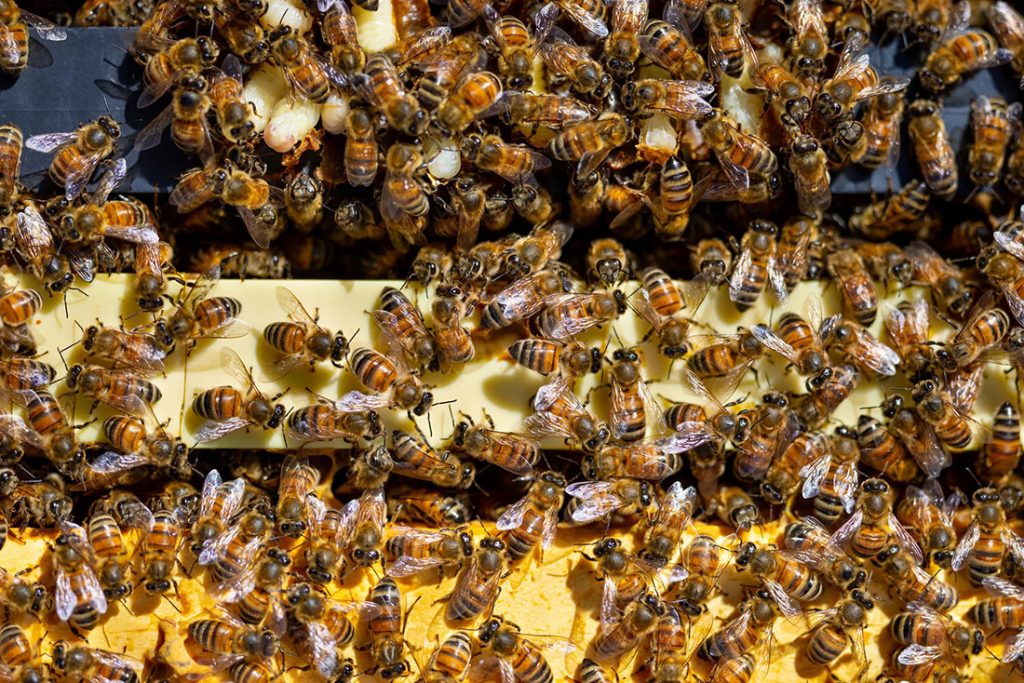
When warm weather finally arrives in Central New York, Christopher Hansen ’25 will be ready to suit up for close encounters with honeybees. Hansen is president of the Beekeeping Club at Syracuse University, a recognized student organization that he founded in 2023 to help manage the University’s honeybee hives on South Campus. “I decided to create the club and try to get more people to join and help teach them about beekeeping,” says Hansen, a chemical engineering major in the College of Engineering and Computer Science. “This spring I’m hoping to get a lot more people to go out and suit up with me.”
Hansen took up beekeeping more than a decade ago, joining his father and grandfather managing about 20 hives downstate in Orange County. “It’s definitely a unique hobby, and honey production is really cool,” he says, likening it to vegetable gardening. “You’re building up a living colony to produce something to harvest. You have a field of workers in your backyard, and you have to work with them because you don’t want to take too much of their food and want to make sure they’re happy and doing well. It’s like having your own factory in the backyard.”

Promoting Pollinators and Pollination
Public health professor Lisa Olson-Gugerty and nutrition and food studies professor Mary Kiernan of the David B. Falk College of Sport and Human Dynamics introduced honeybees to the South Campus landscape in spring 2020. Supported by a College as a Lab for Sustainability grant, they set up six hives that became home to over 300,000 honeybees. Since then, the bees’ honey has been harvested in the summer and early fall, to be bottled and sold on campus. The hives are also part of the University’s initiative as an affiliate of the Bee Campus USA program, a nationwide organization of college and university campuses dedicated to conserving pollinators.

“From an academic standpoint, maintaining hives can provide students with hands-on learning experiences related to ecology, biology, environmental science and sustainability,” says Olson-Gugerty, who serves as faculty advisor to the Beekeeping Club. “It allows students to observe pollination, understand the roles of bees in biodiversity and explore sustainable agricultural practices.”
In recent years, the University has enhanced its sustainability management practices, creating native pollinator habitats with native plant species, minimizing the use of pesticides and establishing a Pollinator Garden as part of Pete’s Giving Garden on South Campus. “Bees play a crucial role in local ecosystems by pollinating plants, which enhances biodiversity and contributes to a healthier campus environment,” Olson-Gugerty says. “They also serve as bioindicators, helping monitor environmental health and the effects of climate change.”

A Relaxing Routine
When Hansen learned about the South Campus colony, he reached out to Olson-Gugerty, letting her know he had experience beekeeping and was interested in helping. In April, in collaboration with other student organizations, the club plans to host a wildflower seed-paper-making event. It’s also holding information sessions and readying a schedule for hive visits.

For Hansen, the entire process is fascinating—from managing the population of the hives to ensuring the queen bee is laying eggs to seeing worker bees that have been gathering pollen (their protein source) and nectar. “They have these little bags in their legs that they store the pollen on, so when they’re going flower to flower, some will fall out and pollinate the plants they visit,” he says. “You can see them fly back into the hives, and they have bright yellow and orange legs because they’re filled up from all the pollen they’ve been collecting.”
While occasional bee stings happen, Hansen enjoys the methodical routine associated with beekeeping. “Once you get over the fact that you got thousands of bees flying around you, it’s really relaxing,” he says. “You don’t have to think too much and there’s minimal strategy. You kind of tuck your mind away and just go to work.”
A Syracuse University story by Jay Cox originally published on March 4, 2025.
